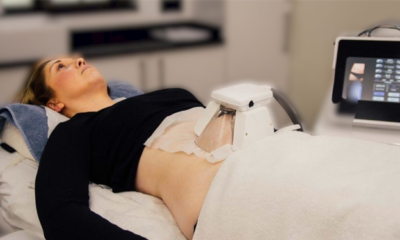Hymenoplasty
Vaginoplasty Surgery in Pakistan, Hymen Repair in Islamabad

If you are thinking about getting a vaginoplasty surgery in Pakistan, we will advise you to conduct careful research to discover reputable best surgeon. To discuss your alternatives, potential risks, benefits, and post-operative care, you should speak with medical professionals.
You need to find reliable and up-to-date information on vaginoplasty treatment in Lahore, Peshawar, Karachi, etc. Although any other medical procedure you could be interested in Rawalpindi, Pakistan.
One of Pakistan’s top gynecologists today is Dr. Shafaq Ramay. She is doing a great job with many people coming to the Dr. Shafaq clinic in Islamabad at address F6 thanks to her many years of experience. You must read the positive feedback from all of our clients before coming for hymenoplasty in lahore.
How Much Does Vaginoplasty Cost in Pakistan
In Pakistan, vaginoplasty costs normally vary from PKR 75,000 to 125,000. Make an appointment for your initial visit with Dr Shafaq Ramay to discuss your choices. She will be able to give you a tailored estimate for vaginoplasty surgery in Lahore following the consultation.
The hymenoplasty cost in Pakistan, might vary significantly depending on the type of treatment, the surgeon’s experience, the location of the hospital or clinic, and the general state of the medical infrastructure.
What is Vaginoplasty?
In this post, we are discussing on detail about the vaginoplasty Surgery in Pakistan, its risks, factors, advantages and disadvantages etc. You can also get the information what is vaginoplasty colon.
Vagina can be created or rebuilt during a surgical operation called vaginoplasty. This treatment is often carried out for people who identify as female and want a vagina but were assigned male at birth (AMAB). In cases of vaginal agenesis (lack of a vagina) or to address problems like gender dysphoria, vaginoplasty can also be done.
Vaginoplasty can be done in a variety of ways, but most of them entail forming a vaginal canal, lining it with tissue. Also frequently using the patient’s own tissue, including skin grafts from the penile or scrotal region.
Additionally, the clitoris may be rebuilt to improve sensitivity and give a more realistic appearance. A meticulous plan, expert surgical skills, and post-operative care are necessary for the difficult surgical surgery known as vaginoplasty.
What is Vaginoplasty Colon?
Colovaginoplasty, also known as colonvaginoplasty or vaginoplasty with colon tissue, is a particular kind of vaginoplasty treatment. In this method, the vaginal canal is made from a section of the colon (big intestine). To imitate a natural vagina, the colon tissue is separated, reshaped, and coated with mucous membrane. When there is not enough penile or scrotal tissue available for creation, this procedure is frequently used.
Why Patients Need Vaginoplasty Surgery in Pakistan?
People may consider hymenoplasty in Pakistan for a variety of reasons, including both medical and personal considerations. It’s important to understand that vaginoplasty patients are not just women; transgender people and those with certain medical conditions also request this treatment.
Give Reasons For Vaginoplasty Surgery in Pakistan
The following are a few typical reasons for choosing to have a vaginoplasty:
Gender Affirmation: Transgender women who want to better match their physical appearance with their gender identification. Which may choose vaginoplasty as a part of their gender affirmation procedure. This can help them feel more in sync with themselves and lessen gender dysphoria.
Vaginal Agenesis or Malformation: Some people are born with disorders that cause the vagina to either not exist or to be malformed. A functioning vaginal canal can be achieved with the aid of vaginoplasty, enabling normal sexual function and raising quality of life.
Personal Well-Being: For some people, having a vagina is crucial to their sense of self and general health. Vaginoplasty can help with mental and emotional wellness and self-esteem.
Sexual Satisfaction: Some people decide to get vaginoplasty in order to increase their level of sexual satisfaction or to have a more gratifying sexual experience that is consistent with their gender identity.
Medical Reasons: Vaginal disorders that affect health and quality of life, such as severe vaginal stenosis (narrowing), may warrant consideration for vaginoplasty in situations where previous therapies have failed.
Post-Cancer Reconstruction: In order to restore normal vaginal function and appearance, women who have undergone treatment for vaginal cancer may elect to have vaginoplasty as part of their reconstructive procedure.
Intersex Disorders: Some intersex disorder sufferers may elect vaginoplasty to correct genital abnormalities and enhance both function and beauty.
It’s important to stress that each person’s decision to get a vaginoplasty is extremely personal and unique. If we talk on hymen repair surgery cost in Pakistan will not be same. All the gynecology clinics getting different charges fee.
What is the Purpose of Vaginoplasty Surgery?
This surgical procedure enables individuals who were assigned male at birth but identify as female to attain a vagina that closely resembles the anatomical and functional characteristics of cisgender women. This can be instrumental in mitigating gender dysphoria and enhancing their overall well-being.
Vaginoplasty effectively tackles the root causes by reuniting separated muscles. Additionally, any excess skin forming the rear of the vagina might be excised during the procedure. Furthermore, the surgeon could opt to eliminate external skin to achieve a more aesthetically pleasing result.
Is Anesthesia Used For Vaginoplasty
Yes, anesthesia is usually used during vaginoplasty surgery in Pakistan. Depending on the particular procedure and the patient’s medical history, a different type of anesthesia may be employed.
Types Anesthesia Used in Surgical Vaginoplasty
General Anesthesia: The most popular form of anesthesia used for large procedures like vaginoplasty is general anesthesia. During an operation under general anesthesia, the patient is fully asleep and unresponsive.
Anesthesiologists give drugs to patients to make them unconscious and keep them that way. By doing this, it is made sure that the patient is pain-free and has no memory of the procedure.
Regional anesthetic: During a regional anesthetic, a patient’s specific body part is numbed while they are still awake. Examples of regional anesthesia include spinal or epidural. These anesthetic techniques are frequently used with sedation to keep the patient at ease throughout the treatment.
Local Anesthesia: Using local anesthetic, a tiny portion of the body is made to feel numb. It is less likely to be used for vaginoplasty due to the complexity of the technique. And the necessity to offer pain relief for a greater area, even if local anesthetic is frequently used for simpler procedures.
The type of anesthetic chosen will depend on the extent of the surgery, the patient’s comfort level, the patient’s medical history, and the preferences of the surgeon. Before the surgery, the anesthesia experts will evaluate the patient’s health and go over the choices to choose the best type of anesthetic.
How Can We Prepare For Vaginoplasty Surgery
In order to achieve the best possible results and ensure a smooth recovery. The preparation process for vaginoplasty surgery involves a blend of medical, emotional, and practical steps. Here are some general guidelines to consider when getting ready for vaginoplasty surgery in Pakistan.
Tips For Vaginoplasty Treatment
Consultation and medical evaluation: Arrange a consultation with a skilled vaginoplasty surgeon. In this consultation, you should go over your objectives, anticipations, and medical background. To decide if you are a good candidate for the procedure, the surgeon will do a complete evaluation.
Health and Lifestyle Optimization: Optimize your health and lifestyle before surgery by making an effort to stay active. This involves maintaining a healthy weight, drinking plenty of water, exercising frequently, and controlling any recurring medical issues. If you smoke, you might want to stop or cut back because it might interfere with healing and rehabilitation.
Medication and Supplements: Let your surgeon know if you are currently taking any prescription drugs, vitamins, or dietary supplements. To reduce the risk of problems, it might be necessary to change or stop using several prescription drugs and dietary supplements before surgery.
Preoperative Tests: In order to check your general health and determine whether you are fit for surgery. Your surgeon may request that you undertake a number of medical examinations, including blood testing, imaging, and electrocardiogram (ECG).
Follow Preoperative Instructions: Your surgeon will give you precise preoperative instructions, such as when to fast before surgery. Which drugs to avoid, and when to take an antiseptic soap in the shower the night before.
Plan for Transportation and Support: Since you’ll probably be released from the hospital following the operation. Make plans for someone to drive you home and stay with you for the first few days as you recuperate.
What Does the Vaginoplasty Procedure Work?
The vagina must be surgically constructed or rebuilt during the vaginoplasty procedure. Depending on the patient’s objectives, anatomy, and the surgeon’s strategy, the procedure’s specifics may change.
Process typically includes the following steps:
Vaginal Canal Formation: Using the tissue at hand, the surgeon creates the vaginal canal. The newly formed vagina, or neovagina, is lined and molded to mirror the anatomical features of a cisgender vagina.
Clitoroplasty: In many instances, clitoroplasty is carried out to produce a clitoris that is both functional and aesthetically beautiful. For the clitoral hood and glans, the surgeon may use tissue from the penis.
Labia Creation: The scrotum or other sources of tissue are used to sculpt and form the labia minora and majora. This contributes to a more organic appearance.
Suturing and Healing: The incisions are carefully stitched, guaranteeing optimal positioning and healing. To reduce fluid buildup during the first healing stage, surgical drains may be inserted.
Postoperative Care: The patient is attentively watched as they recover from anesthesia following surgery. Important components of postoperative treatment include pain control, wound care, and monitoring for any potential problems.
Recovery and Follow-Up: During the recovery phase, activity levels should be progressively increased while adhering to the surgeon’s instructions. Appointments for regular follow-ups are made to track healing, address any issues, and offer suggestions for the best possible recovery.
Side Effects or Risks of Vaginoplasty
The following are some potential dangers of vaginoplasty in Pakistan:
Infection: There is a danger of infection during each surgical procedure. An infection at the surgical site can cause increased discomfort, a delay in healing, and the requirement for further care.
Bleeding: Postoperative bleeding is a possibility and may need to be controlled medically.
Poor Wound Healing: Issues with blood circulation or underlying medical issues can cause a wound to fail to heal properly, delaying recovery and necessitating extra surgeries.
Scarring: Scarring is a typical side effect of surgery. While every effort is made to minimize visible scars, different people heal in different ways.
Nerve Damage: During surgical procedures, tissues are moved about, potentially damaging surrounding nerves. This could cause numbness or altered sensation in the surgery location.
Blood Clots: During the healing process, extended periods of inactivity might raise the chance of blood clot development, which can be harmful if a clot spreads to key organs.
Complications of anesthesia: Anesthesia has its own set of dangers, such as allergic responses, respiratory issues, and negative drug interactions.
Complications involving the urine or fecal systems may occasionally occur as a result of the surgical site’s closeness to these organs.
Loss of Sensation or Function: Although every attempt is taken to keep sensation and function, there is a chance that these may be compromised postoperatively.
How Long Does Vaginoplasty Recovery Time Take?
However, the initial healing period following a vaginoplasty surgery in Pakistan usually lasts 6 to 8 weeks. An approximate timeline for recovery is provided below:
Immediate Postoperative Period (1-2 Weeks): The first week following surgery is probably going to be uncomfortable for you while you recover from swelling and bruises.
2-4 Weeks After Surgery: Swelling and bruising should start to go down, and you could start to feel a little more at ease.
4-6 Weeks Post-Op: By this point, the majority of the swelling ought to have subsided and you might be feeling more like yourself. Depending on the demands of your profession, you might be able to pick up some minor activities and work again.
6-8 Weeks Post-Surgery: Around 6 to 8 weeks after surgery, many patients report a significant increase in their general level of comfort.
Long-Term Recoveries (Last 3-6 Months): It may take several months for a full recovery. Even though you might feel a lot better in two to three months.
What Are Good Results of a Vaginoplasty Surgery
The outcomes of a vaginoplasty can differ depending on a person’s anatomy, surgical method, healing times, and personal objectives.
The following are some typical outcomes and effects of vaginoplasty:
Improved Gender Affirmation: Vaginoplasty can help transgender women who experience gender dysphoria by allowing them. To have physical characteristics that correspond to their gender identification. This may help people feel better about themselves and have better mental health.
Functional Vagina: The main objective of vaginoplasty is to produce a vaginal canal that is permeable during sexual activity and makes urination easier. The goal of surgery is to create a neovagina that closely resembles the morphological and physiological traits of a cisgender vagina.
Aesthetics: The genital region’s appearance is also taken into account. The goal of surgery is to give patients natural-looking labia and clitoris that match their aesthetic preferences.
Sensory Changes: While every person’s experience is unique, some people may notice changes in the neovaginal area’s sensation, including an increase in sexual sensitivity. Surgical technique and a patient’s unique nerve response are two factors that can affect the outcomes of a sensory test, which can be unpredictable.
Postoperative Healing and Adaptation: The early healing stage is characterized by swelling, bruising, and discomfort. These symptoms gradually fade as the healing process continues, and the neovagina assumes its intended shape.
Long-Term Results: Scars and incisions typically diminish with time, giving the appearance of a more natural appearance.
As the body recovers from the changes brought on by surgery, long-term healing and results continue to change.
It’s important to have reasonable expectations and to express your preferences and aims to your surgical team in detail during preoperative consultations. Depending on your unique situation, gender-affirming surgery specialists can provide you a clear explanation of what can be accomplished.
Contact to Dr Shafaq Ramay Vaginoplasty Surgery in Rawalpindi
Dr. Shafaq Ramay is one of Pakistan’s leading gynecologists at the moment. Thanks to her extensive experience and the large number of patients that visit the Dr. Shafaq clinic in Islamabad at address F6, she is performing a fantastic job.
Contact +92 321 8880038
Email: contact@docshafaq.com
-

 Hymen Repair1 year ago
Hymen Repair1 year agoHymen Repair Surgery Cost in Islamabad, Rawalpindi, Lahore, Pakistan
-

 Breast Filler1 year ago
Breast Filler1 year agoBreast Filler Injections Before and After
-
Blog1 year ago
Female Virginity Hymen Repair Surgery, Hymenoplasty in Pakistan
-

 Breastfeeding1 year ago
Breastfeeding1 year agoSaggy Breast after Breastfeeding Solution in Rawalpindi, Lahore, Karachi, Dr Shafaq Ramay
-

 Fat Dissolving1 year ago
Fat Dissolving1 year agofat dissolving injections in Islamabad, Rawalpindi & Peshawar
-

 Breast Augmentation12 months ago
Breast Augmentation12 months agoBreast Augmentation in Lahore, Rawalpindi, Islamabad, Peshawar, Dr Shafaq Ramay
-

 Hymen Repair12 months ago
Hymen Repair12 months agoLaparoscopic Vaginoplasty in Lahore, Islamabad, Rawalpindi, Dr Shafaq Ramay
-
Cosmetic Gynecology1 year ago
Most Common Plastic Surgery For Females 2023
